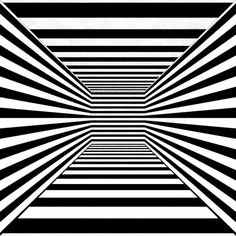|
(2017
final exam assignment) Model Student Midterm answers 2017 (Index) Essay 3: Web Highlights |
 |
Vaneza Cervantes
The Truth of Women in Sci-Fi
For
my Web highlights I am curious to critique and explore past student’s Essay 2:
personal/ professional interests. I will be looking at the common theme of women
found in science fiction and what my fellow past peers have said. I will be
looking at Ashley Idema’s Narratives of
the Future: Making Women More Badass, Timothy Morrow’s
All Lilies Wither: Analyzing Sexual
Representation and Violence towards Women in Sci-Fi, and Ashley Rhodes’
The Science of Feminine Fiction 2.
Ashley Idema argues that she has noticed that female authors create better
female character, whereas male authors create ‘less than stellar’ female
characters. Idema’s opening paragraph pays tribute to all the great that science
fiction male authors have done with their male leads. They are no longer
categorized into the ‘Prince Charming mold’. The men now come in all shapes and
sizes, yet women are overly sexualized. However Idema notices that now, “women
are finally starting to stand out in less predictable roles…thanks to female
authors.” Idema then discusses characters like Octavia Butler’s Lauren, where
she is not waiting for someone to rescue her Lauren acts on her own accord. Rye,
also from Octavia Butler, is another character that Idema brings up who does not
need saving, she protects herself. Drapes and Folds is another example she
brings up about the community of only women that find a way to survive and
reproduce without men. Lastly Idema ties up her essay with Terry Bisson’s quote,
“they’re made out of meat.” This signifies that behind race and gender we are
all meat, we are the same.
Ashley Idema brings an amazing point, now we do not see it that often women
being the damsel in distress. She has used exemplar examples of women author’s
and how they show women. However, I am curious to see if all male authors truly
degrade women? In Somebody Up There Likes
Me we see two strong female character Snookie and Janet who talk with
confidence and strength to the male characters. What I loved about this short
story is that the male characters respected them and followed their advice. Also
in The Onion and I we see the mother
character dominating the whole experiment and pushing her family to do as she
wishes. This is another strong and confident female character written by a male.
Therefore I feel that her essay would have been more interesting if she looked
at male authors and analyzed how they portrayed their female characters.
Going
on with the same idea that woman are only deemed as sexualized objects Timothy
Morrow goes further in analyzing the sexual representation and violence towards
women. He first opens his essay with an interesting concept from Karin Blair,
femme-objet which means “caught in
the constructs of the male imagination.” Going with this idea of women primarily
being femme-objet, Morrow notices
this in Stone Lives. Morrow states,
“June is in his story, not of a flesh out character that can help further the
plot, but a character defined by her flesh and the fantasies of the man that
wrote her.” This is true, June was just written to be ‘eye-candy’, at the end
the reader finds out that June committed suicide making her an incompetent
character that had no specific purpose in the short story. Morrow then makes a
daring comment about Parable of the Sower,
while those who read the novel agree that the author wrote a strong female
character Lauren. Morrow is right, “the first opportunity the author has in
representation women of the future, she presents them as victims to their
sexuality and prisoners to a world that views them by their bodies.” Yes, Lauren
is a strong female character, but in the novel Lauren had to change her gender
to not be condemned to what happened to the other women. Therefore Lauren being
disguised as a male provided her safety, however she was still not able to be a
strong female character.
Timothy Morrow brings up excellent examples that show the concept of
femme-objet.
Looking at the concept of
femme-objet, as a female I feel
disgusted of what truly lies beneath the surface. Starting with Genesis, the
first story ever told, women are portrayed as sinful and evil. We were created
to taken care by a men and be an object of their desires. I found Morrow’s essay
inspirational and eye opening; he truly looked within the short stories and
identified the entire negative and repulsion that is truly found for female
characters. I appreciate this coming from a male writer, that he is not being
bias and seeing the truth of female characters. Like he states at the end of his
essay, maybe yes all of this was just meant to ‘attract the male crowd’ but
should one degrade the female character.
Ashley Rhodes now takes the idea of women in science fiction further in noticing
the significance and portrayal of women in the science fiction literature.
Rhodes acknowledges the truth within, like how Timothy wrote, that the only way
for Lauren to survive us to dress like a man. In
Stone Lives, Rhodes goes deeper in
her analysis by addressing the surprising suicide of June, “if June were alive
in the end of the story there would be reason to assume they would run the
company together. In this ‘guy fantasy’ the men prevail and the women are
terminated.” I still see the notion of femme-objet present in what Rhodes is
saying, which is very true. In a ‘man’s fantasy’ the woman cannot be a
dominating figure like the man. Rhodes then goes on talking about Weena and how
The Time Machine, “dehumanizes women
by making them seem irrational and frail.” Weena is written almost like a lost
puppy wondering around with her owner. This is degrading for women and just sad.
However Rhodes does agree with what Idema said, “Drapes and Folds is by far the
most feminine text we have read.” Rhodes then ends the same way as the other
writers, wishing for an unprejudiced novel towards gender.
To
conclude, in Ashley Idema’s essay we learned that female authors do tend
highlight a little bit better on female characters. In Timothy Morrow’s essay we
looked within the pages and saw that women, even to this day, will fall under
the femme objet. However there are
promising women that authors did not degrade. Ashley Rhodes agrees with me
saying “The Onion and I [can be seen]
as a gender reversal story. The mother is dominating over the decisions.” In the
end woman are part of the minority group, men will always be the dominate figure
in our society, but slowly we are changing our world and becoming all inclusive.





